.jpg)
In any garden or balcony, choosing the right soil for your garden (even in a pot) can make the difference between a wilting plant and a thriving green oasis.
A quality potting soil mix gives your plants the perfect balance of moisture, air, and nutrients.
Urban balcony gardeners often juggle limited space and resources – but with the right mix, even a small container can yield big results.
Complete Expert Guide to Potting Soils & Mixes
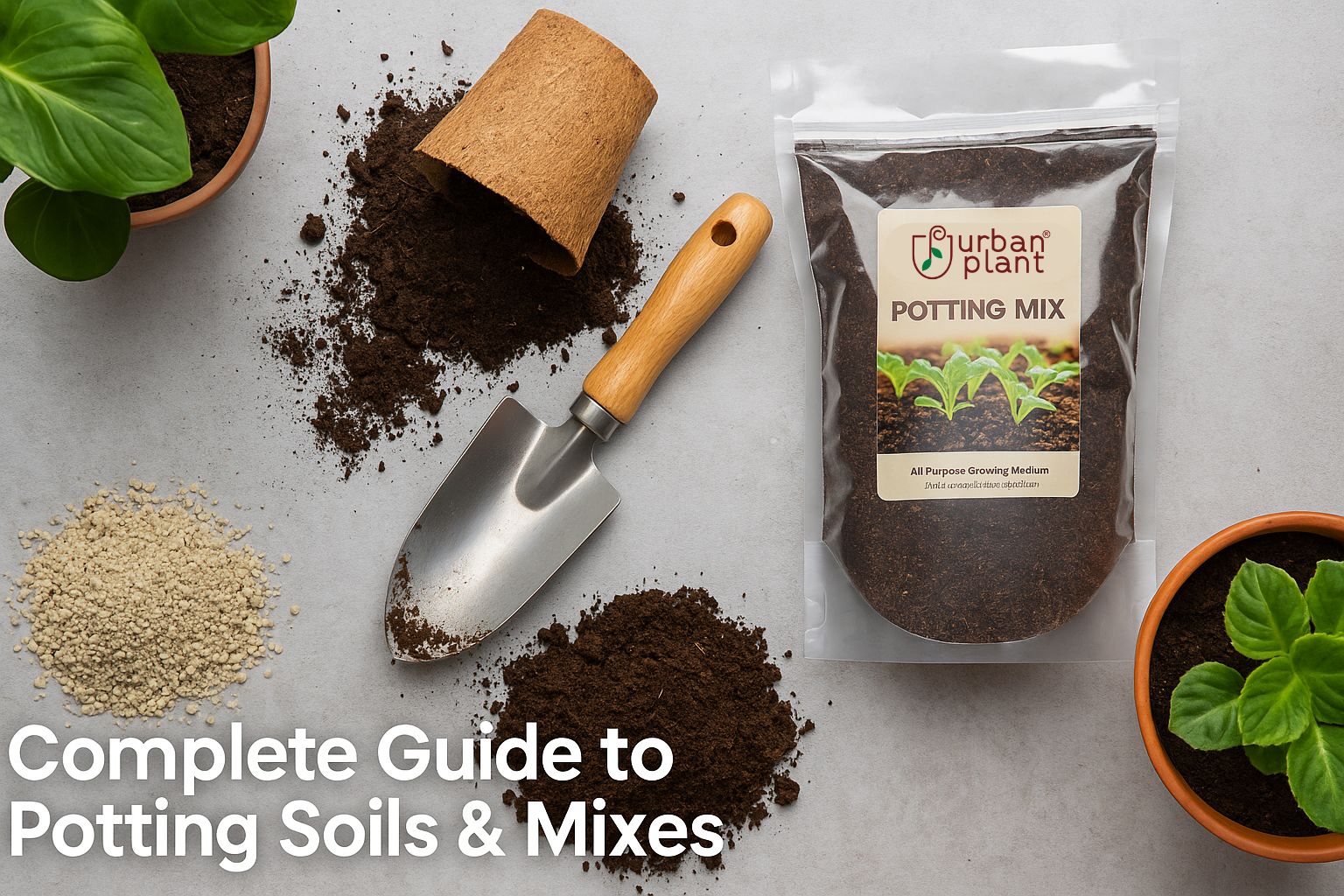
Most potting mixes are actually soilless blends of peat moss (or coconut coir), perlite or vermiculite, and organic matter.
These ingredients provide water retention and aeration.
As estate gardener Brooke Medlin explains, typical mixes contain peat moss, pine bark, and airy minerals like perlite or vermiculite — “Peat and perlite are really made for aeration, so they’re found in pretty much every potting mix.”
A good mix should stay loose for roots. Horticulturist Joyce Mast adds that the key qualities of any mix are pH, porosity, and water-holding capacity.
Also Read
How to Make Vermicompost Successfully at Home With Steps
Vermicompost vs Chemical Fertilizer: What’s Really Best for Your Healthy Plants?
Key Ingredients in a Potting Mix
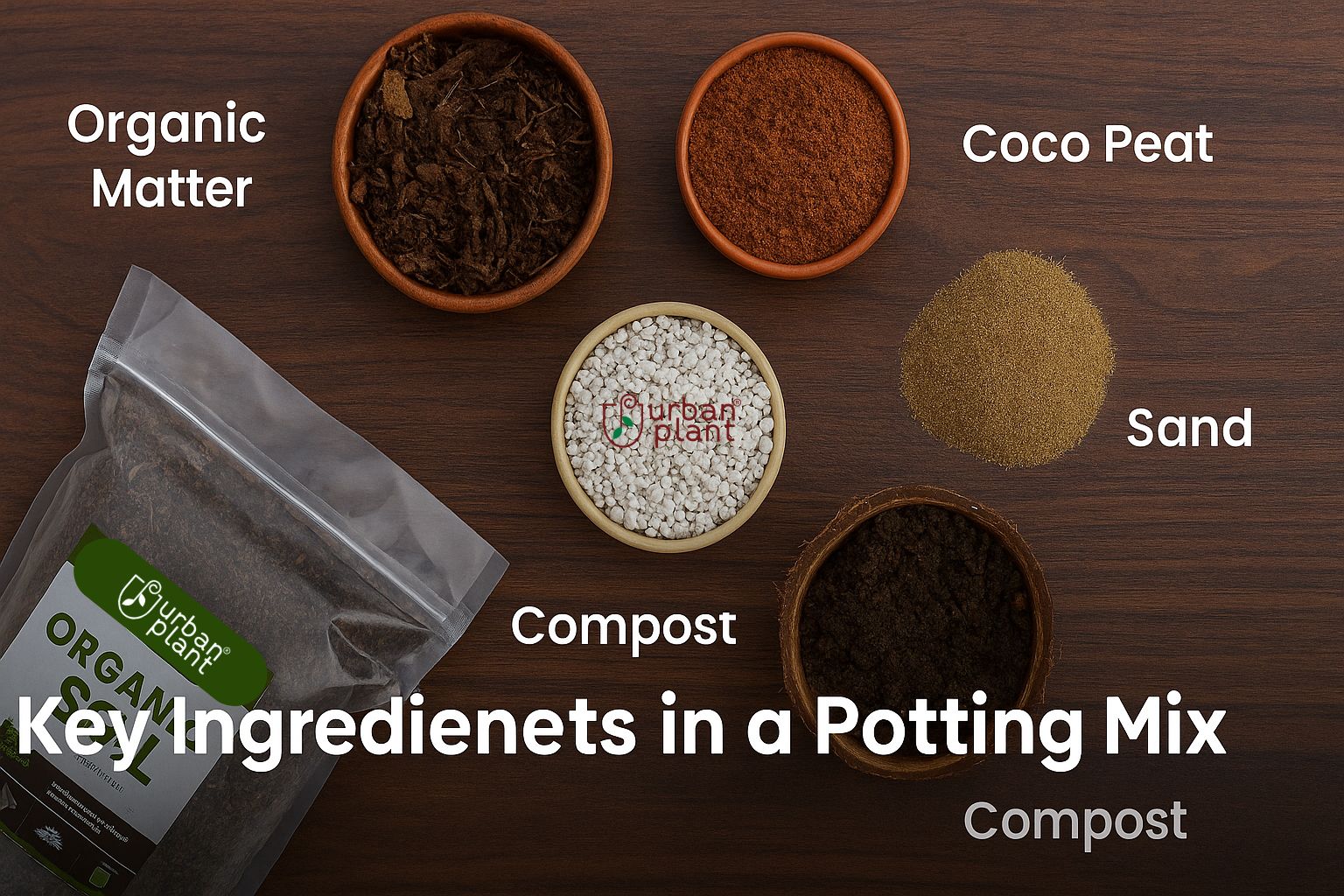
The ingredients below are common in the best potting soil mix for healthy plants:
1- Organic Base (peat moss, coco coir, or compost)
This is the bulk of the mix. Peat moss or coconut coir holds water and provides structure.
For example, Urban Plant’s Cocopeat Brick expands when soaked and offers excellent moisture retention and aeration.
Well-rotted compost or manure (like cow manure) adds nutrients (N-P-K) and beneficial organisms.
2- Aeration/Drainage Materials (perlite, vermiculite, sand)
These keep the mix light and draining. Perlite (shown below) is a lightweight mineral that keeps air pockets in the soil.
Vermiculite is similar but holds more water and nutrients. A handful of sand or fine gravel can also boost drainage.
The goal is to prevent compaction so roots can breathe.
3- Nutrients and pH Adjusters
Many mixes include some compost or slow-release fertilizer.
For instance, balanced cow manure not only provides nutrients but also improves aeration and moisture retention.
Mixes may also contain lime or sulfur to adjust pH for acid-loving or alkaline-preferring plants.
Matching Potting Mix to Your Plants
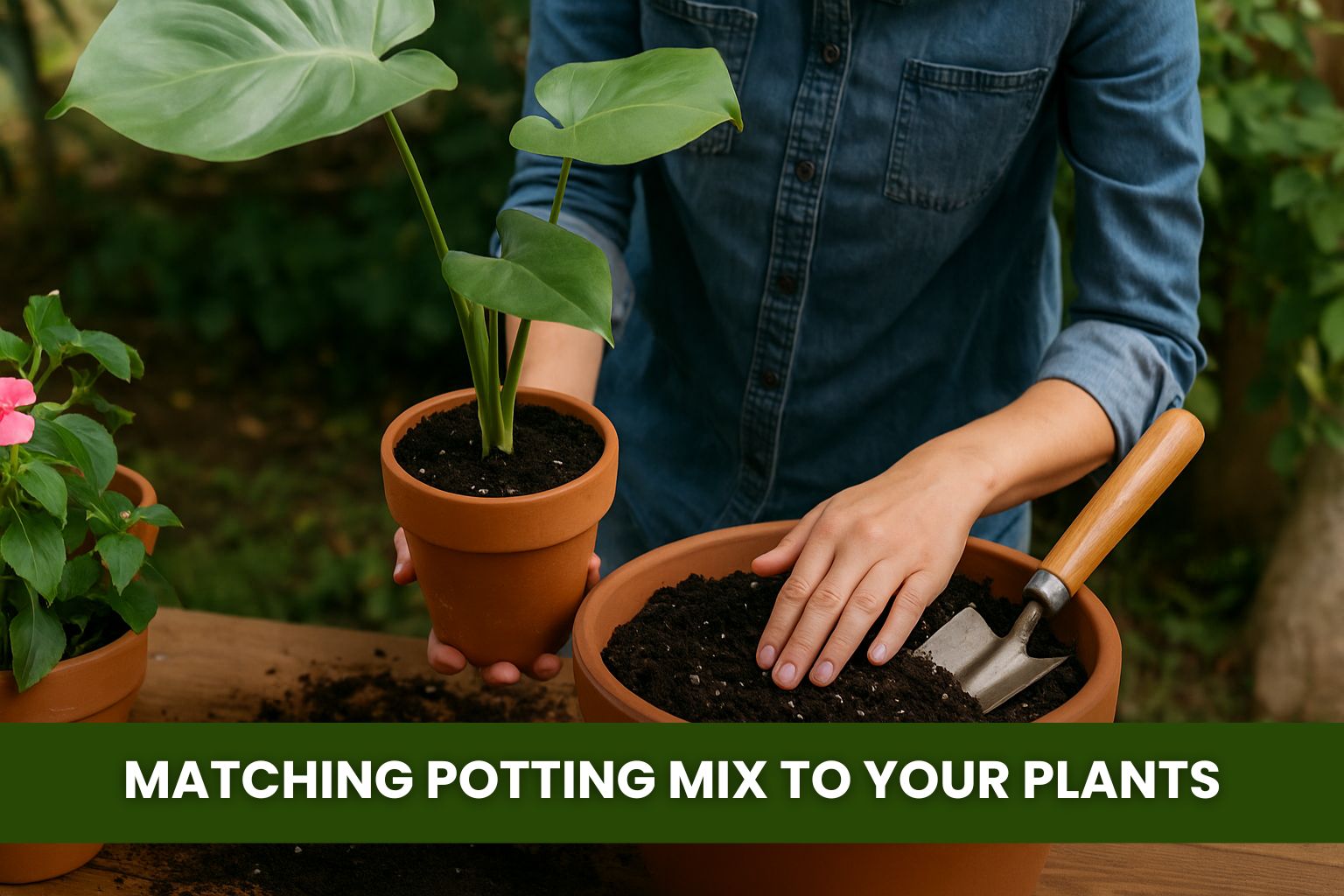
Different plants have different needs. Succulents and cacti need a fast-draining mix (often sold as “cactus mix”) with extra sand or pumice.
Orchids use chunky bark for aeration. Most houseplants and vegetables prefer a balanced indoor mix that stays evenly moist.
In practice, tweak a mix to fit the plant. For example, many gardeners use roughly 50% basic potting soil, 25% perlite, and 25% sand for succulents.
Another tip: mix orchid bark into indoor potting soil to keep it airy. In all cases, a good potting mix should match the plant’s needs, balancing moisture and drainage.
Improving Drainage and Soil Health

Good potting mix manages water wisely. If soil stays waterlogged, roots can rot. To improve drainage, stir in coarse organic matter or perlite.
Adding compost not only aids drainage but also feeds plants. The EPA notes that compost “adds much-needed organic matter to soil, improves plant growth... [and] improves soil water holding capacity.”
Even mixing 10–20% home compost into your potting soil can boost fertility and moisture retention.
Recycling kitchen scraps into compost produces a rich amendment for potting mix.
Blend it into containers (about 20% compost to 80% potting mix) or top-dress plants yearly.
This keeps the soil nutrient-rich and loose. Never add heavy garden soil to pots – it compacts too easily in a confined space.
Urban Gardening Tips
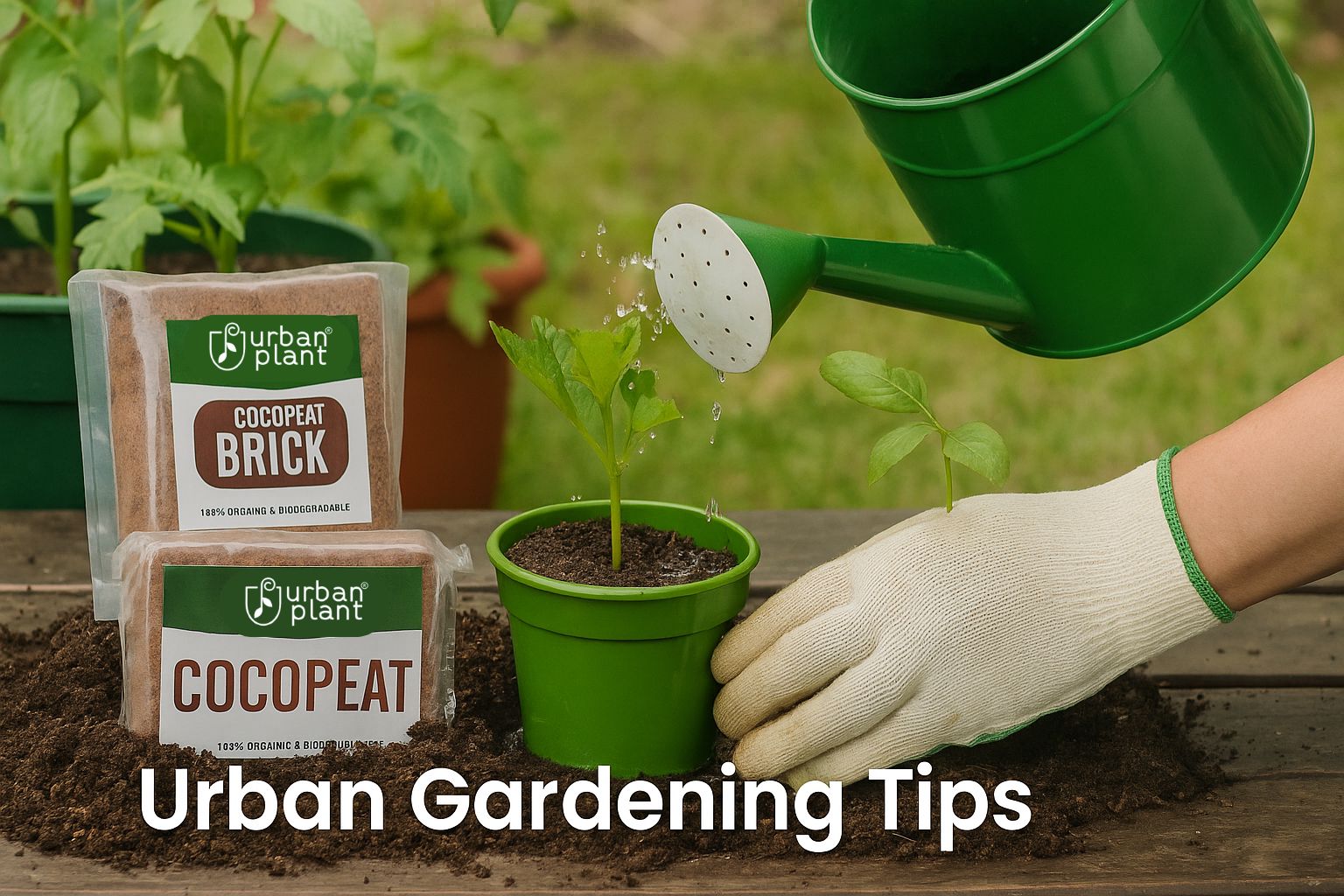
City gardeners often use containers or raised beds, so choosing the right soil for your garden usually means starting with a potting mix and amending it.
For example, an urban tomato grower might mix extra compost and vermiculite into the potting soil to support heavy fruiting.
Pennsylvania Extension suggests a 1:1:1 blend of garden loam, peat moss, and coarse sand for large raised beds, but for most containers a soilless mix is lighter and more sterile.
Urban Plant’s products can help city growers.
Their Cocopeat Brick (coconut coir) provides an eco-friendly base that holds water and aerates well.
Adding Urban Plant’s perlite or vermicompost boosts oxygen and nutrients. Even a spoonful of cow manure enriches soil with N-P-K and microbes.
These amendments help plants thrive in limited space.
DIY Potting Mix & Expert Tips
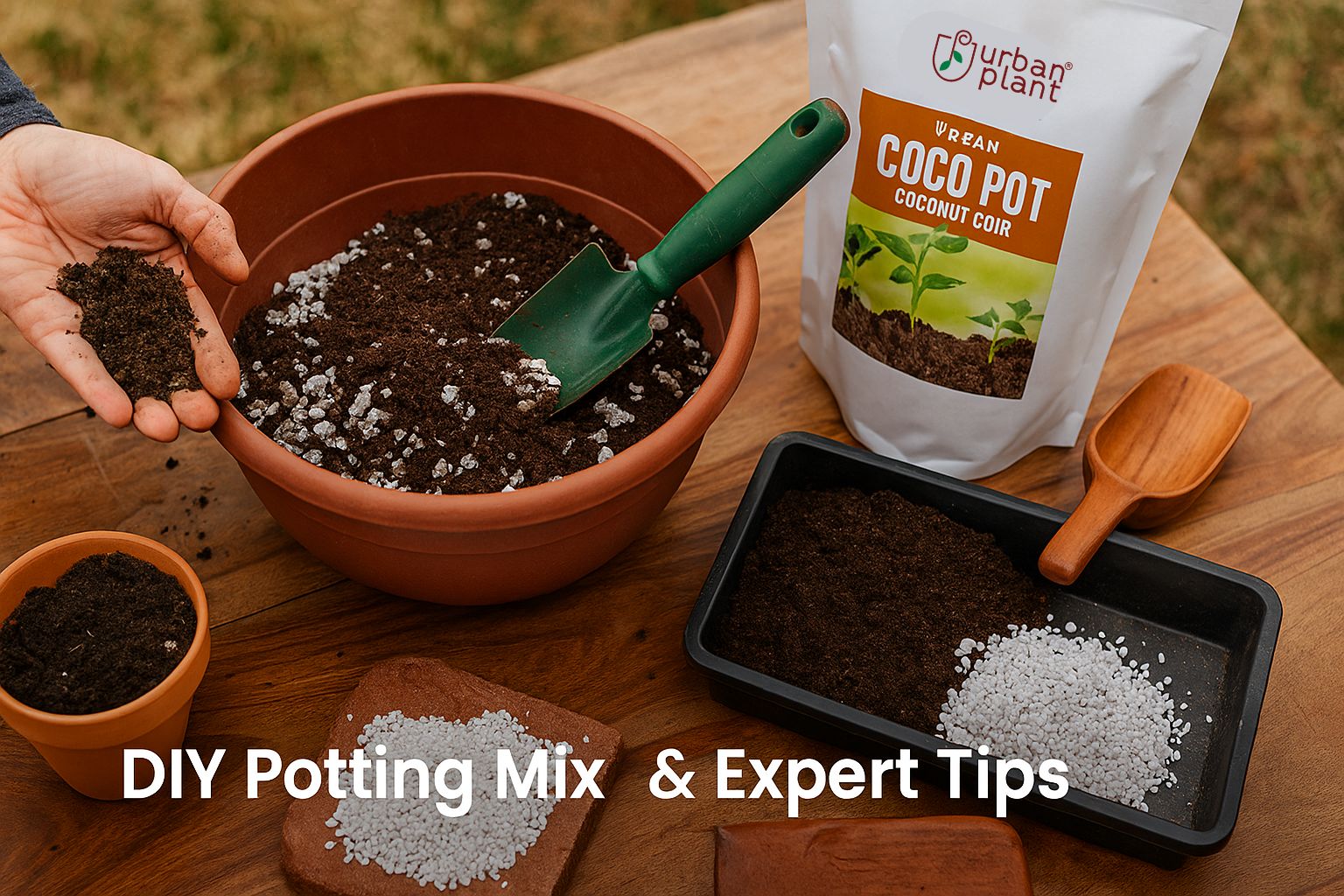
Making your own mix is simple. A classic recipe is:
- 1 part coconut coir or peat moss – holds moisture.
- 1 part compost or well-rotted manure – adds nutrients.
- 1 part perlite or coarse sand – ensures drainage.
Adjust as needed: more sand for cacti, more compost for vegetables. Always pre-soak coco coir or peat before mixing, so it hydrates fully.
Brooke Medlin emphasizes that aerating ingredients (peat and perlite) are in almost every good mix.
One home gardener adds a spoonful of bone meal to feed tomatoes.
Another user tip: skip pebbles at the bottom of pots – they don’t improve drainage; focus on a loose, well-draining soil instead.
Why Choosing the Right Soil Matters
Healthy plant growth starts with the soil. The right potting mix supports strong roots, proper drainage, and nutrient absorption.
Using generic or heavy garden soil in pots can lead to waterlogging, pests, and stunted growth.
What Makes a Good Potting Soil?
- Light and fluffy texture
- Well-draining, yet retains moisture
- Rich in organic nutrients
- Contains microbes for soil health
- pH balanced (around 6.0–7.0)
Best Potting Mixes by Plant Type
- Indoor plants: cocopeat + compost + perlite
- Balcony garden: cocopeat + neem cake + compost
- Outdoor/flower beds: garden soil + compost + sand
- Succulents: sand + perlite + a bit of compost
- Vegetables: compost-rich mix with vermicompost
Homemade Potting Mix Recipe
Mix 40% cocopeat, 30% compost, and 30% sand or perlite. Add 1 tbsp neem powder per 2 kg of mix. This all-purpose potting mix is budget-friendly, organic, and perfect for Indian climate.
FAQs: Everything You Need to Know About Potting Soil Mix
What is the difference between potting soil and potting mix?
Today they mean nearly the same thing. Most commercial “potting soil” contains no actual earth; it’s a soilless mix of peat, coir, perlite, etc.. Either way, these products are engineered to be lightweight, sterile, and well-draining – unlike heavy garden dirt.
How to choose the right potting mix for your plants?
Match the mix to your plant’s needs. For houseplants and veggies, use a balanced mix rich in organic matter (compost). For succulents or cacti, use a gritty mix with extra sand or perlite. Look for mixes labeled for your plant type (cactus mix, orchid mix), or blend your own as above. The goal is a balance of moisture retention and good drainage.
Can I make my own potting soil mix?
Yes. The recipe above works well. The advantage of DIY is you can tailor it and keep it fresh. Make sure all ingredients are well-composted, and moisten the peat/coir first. Homemade mix can be superior to store-bought since you control quality.
What’s the best potting soil mix for indoor plants?
A good indoor mix is light and slightly acidic to neutral. Many are peat-based with perlite. Ensure it drains well – add more perlite if pots hold too much water. Indoor plants stay in one pot longer, so feed them with a balanced fertilizer or worm castings periodically.
How often should I refresh potting mix?
Refresh potting mix every 1–2 years. Nutrients get used up and soil can compact. When repotting, mix in fresh soil or compost. In between, top-dress containers with compost or slow-release fertilizer yearly. This keeps container soil healthy and plants happy.
What can I add to improve my potting mix?
You can add compost, vermicompost, perlite, vermiculite, coconut coir, or sand. Compost and manure add nutrients and microbes perlite/vermiculite improve aeration; coir improves moisture retention. Choose additives based on need: e.g. add coco coir if the mix dries too quickly, or add extra perlite if it stays too wet. The right balance yields the best potting soil mix for healthy plants.
What is the best potting soil for plants in India?
A mix of cocopeat, compost, and sand or perlite works best for Indian climates and plant needs.
What’s the difference between potting soil and potting mix?
Potting soil may contain actual soil; potting mix is usually soilless, lighter, and better for pots.
Can I reuse old potting soil?
Yes, but refresh it by adding compost, neem powder, and checking for pests.
How do I improve drainage in potted plants?
Use pots with drainage holes and add perlite, sand, or small stones at the bottom.
Conclusion: Your Plant’s Success Starts with the Soil
Choosing the right potting mix is critical to your gardening success.
With the right knowledge and high-quality soil blends, your plants will thrive, producing vibrant blooms and healthy foliage.





